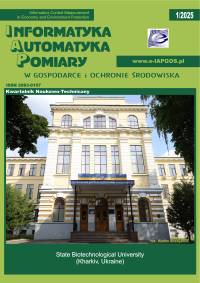WPŁYW WYSOKIEGO NAPIĘCIA NA ROZWÓJ TKANKI ROŚLINNEJ
Eliška Hutová
xhutov00@stud.feec.vutbr.czBrno University of Technology, DTEE FEEC (Czechy)
Petr Marcoň
Brno University of Technology, DTEE FEEC (Czechy)
Karel Bartušek
Institute of Scientific Instruments, ASCR (Czechy)
Abstrakt
W naszym eksperymencie badane były parametry elektryczne, które wpływają na wczesne zarodki somatyczne (ESE). Wysokie napięcie wytworzono za pomocą specjalnego generatora. Wysokie napięcie, z przedziału od 5 do 20 kV i częstotliwości 1 Hz przykładano podłużnie i poprzecznie bezpośrednio do szalki Petriego z 2 dniowymi wczesnymi zarodkami somatycznymi Picea abies, codziennie na okres 3 godzin. Jedną szalkę umieszczano bezpośrednio na górnej części generatora wysokiego napięcia, a na drugiej szalce umieszczono dwie płytki miedziane do przenoszenia wysokiego napięcia. Szalki Petriego poddano działaniu wysokiego napięcia przez 14 dni. Po upływie tego czasu oceniano wpływ wysokiego napięcia. Do oceny zastosowano metody biologiczne i chemiczne. Potwierdziły one zmiany we wzroście wczesnych zarodków somatycznych (ESE).
Słowa kluczowe:
wczesne zarodki somatyczne, wysokie napięcia, Picea abiesBibliografia
Blackman V. H., Legg A. T.: Pot culture experiments with an electric discharge. J. Agric. Sci. 14, 1924, 268–273.
Google Scholar
Blackman V. H.: Field experiments in electroculture. J. Agric. Sci. 14, 1924, 240–267.
Google Scholar
Chiabrera A., Bianco B.: The role of the magnetic field in the EM interaction with the ligand binding. Mechanistic approaches to interactions of electric and electromagnetic fields with living systems. 1987, 79–95.
Google Scholar
Conti R., Nicolini P., Cerretelli P., Margonato V., Veicsteinas A., Floris C.: ENEL’s research activity on possible biological effects of 50 Hz electro-magnetic fields – Results and plans of a large research programme. Alta Freq 58, 1989, 395–402.
Google Scholar
Davies M. S.: Effects of 60 Hz electromagnetic fields on early growth in three plant species and a replication of previous results. Bioelectromagnetics 17, 1996, 154–161.
Google Scholar
Ellis H., Turner E. R.: The effects of electricity on plant growth. Sci. Pro. Oxf. 65, 1978, 395–407.
Google Scholar
Goldsworthy A.: Electrostimulation of cells by weak electric currents. Electrical manipulation of cells. New York: Chapman & Hall. 1996, 249–272.
Google Scholar
Hepler P. K., Wayne R.: Calcium and plant cell development. Ann Rev Plant Physiol 38, 1985, 397–439.
Google Scholar
Hodges T. K., Mitchell C. A.: Influence of High Intensity Electric Fields on Yield of Sweet Corn and Dent Corn 1982. American Electric Power Service Corporation, North Liberty, Indiana, 1984.
Google Scholar
Jones D., McLeod B.: Electromagnetic cell stimulation. In: Electrical manipulation of cells. New York: Chapman & Hall. 1996, 223–247.
Google Scholar
Karcz W., Burdach Z.: The effects of electric field on the growth of intact seedling and coleoptile segments of Zea mays L. Biol. Plant 37, 1995, 391–397.
Google Scholar
Lednev L. L.: Possible mechanism for the influence of weak magnetic fields on biological systems. Bioelectromagnetics 12, 1990, 71–75.
Google Scholar
Liboff A. R., McLeod B. R.: Kinetics of channelized membrane ions in magnetic fields. Bioelectromagnetics 9, 1987, 39–51.
Google Scholar
Marcon, P., Fiala, P., Steinbauer, M., Cap, M.: Special High Voltage Function Generator. PIERS ONLINE vol. 7, num. 6., 2011, 547-550.
Google Scholar
Müller A.: Mögliche Auswirkungen elektromagnetischer Felder auf die Vegetation. Diploma paper, Agricultural University Vienna, 1990.
Google Scholar
Phirke P. S., Kubde A. B., Umbarkar S. P.: 1996. The influence of magnetic field on plant growth. Seed. Sci. Technol. 24, 1996, 375–392.
Google Scholar
Plätzer K., Obermeyer G., Bentrup F.W.: AC fields of low frequency and amplitude stimulate pollen tube growth possibly, 1996.
Google Scholar
Potts M. D., Parkinson W. C., Nooden L. D.: Raphanus sativus and electromagnetic fields. Bioelectrochem Bioenerg 44, 1997, 131–140.
Google Scholar
Raleigh R. J.: Joint HVDC Agricultural Study: Final Report. Oregon State University, Portland, Oregon, 1988.
Google Scholar
Rathore K. S., Goldsworthy A.: Electrical control of shoot regeneration in plant tissue cultures. Bio. Technol. 3, 1985, 1107– 1109.
Google Scholar
Rogers L. E., Beedlow P. A., Carlile D. W., Gano K. A.: Environmental Studies of a 1100 kV Prototype Transmission Line. An Annual Report for the 1983 Study Period. Batelle Pacific Northwest Laboratories, Portland, Oregon, 1984.
Google Scholar
Schnepf E.: Cellular polarity. Ann. Rev. Plant. Physiol. 37, 1986, 23–47.
Google Scholar
Smith S. D., McLeod B. R., Liboff A. R., Cooksey K. E.: Calcium cyclotron resonance and diatom motility. Bioelectromagnetics 8, 1987, 215–227.
Google Scholar
Vlachova Hutova, E., Bartusek, K., Fiala, P.: The Influence of a Magnetic Field on the Behaviour of the Quantum Mechanical Model of Matter. In PIERS 2014 Guangzhou Proceedings. Progress in Electromagnetics, 2014, 1847–1851.
Google Scholar
Vlachova Hutova, E., Bartusek, K., Mikulka, J.: Study of the Influence of Magnetic Fields on Plants Tissues. In Proceedings of PIERS 2013 in Taipei. Progress in Electromagnetics, 2013, 57–60.
Google Scholar
Zhang H., Hashinaga F.: Effects of high electric fields on the germination and early growth of some vegetable seeds. J. Jpn. Soc. Hort. Sci. 66, 1997, 347–352.
Google Scholar
Autorzy
Petr MarcoňBrno University of Technology, DTEE FEEC Czechy
Autorzy
Karel BartušekInstitute of Scientific Instruments, ASCR Czechy
Statystyki
Abstract views: 209PDF downloads: 0
Licencja

Utwór dostępny jest na licencji Creative Commons Uznanie autorstwa – Na tych samych warunkach 4.0 Miedzynarodowe.
Inne teksty tego samego autora
- Pavel Fiala, Karel Bartušek, Jarmila Dědková, Premysl Dohnal, ANALIZA POLA EMG W MIKRO/NANOSKOPOWYCH MODALECH MATERII , Informatyka, Automatyka, Pomiary w Gospodarce i Ochronie Środowiska: Tom 9 Nr 1 (2019)
- Pavel Krepelka, Fernando Pérez-Rodríguez, Karel Bartusek, IDENTYFIKACJA BAKTERII W WIDMIE BLISKIEJ PODCZERWIENI , Informatyka, Automatyka, Pomiary w Gospodarce i Ochronie Środowiska: Tom 4 Nr 3 (2014)








